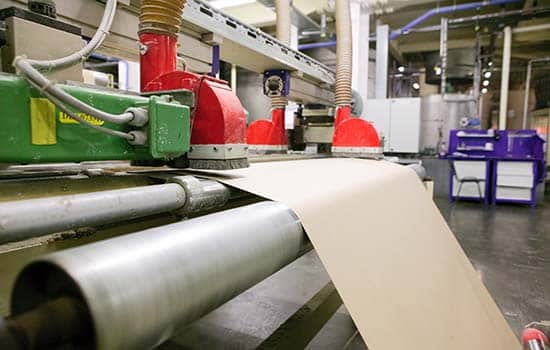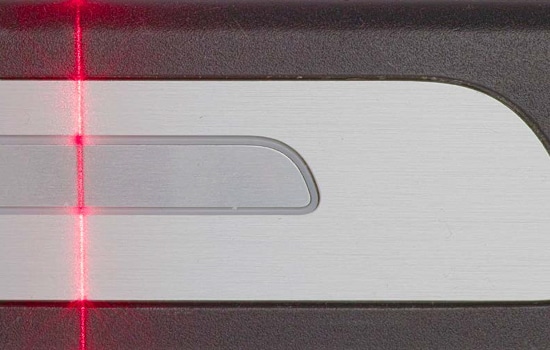A wide range of test and measurement applications in the industry, such as structural health monitoring, civil engineering, and manufacturing automation employ non-contact displacement measurement sensors in the development of their test systems. Laser displacement sensors offer a high precision measurement and can be easily employed in almost all displacement and position measurement tasks.

Non-contact laser displacement measurement systems are widely known displacement sensors that offer reliable, high speed and high-precision measurement of distance, displacement and position. They provide stable measurements in an industrial environment to ensure consistent product quality and continuous production. These sensors are highly sought-after as test stands, industrial components and environmental conditions can generate Electromagnetic (EM) noise, which may tamper with the signals that affect the measurement accuracy. In addition, laser sensors can also reliable measure components with complex surfaces and geometries as it may be very challenging to do the same with contact-type displacement sensors.
In this blog, we will discuss the details of laser displacement measurement sensors, including the measuring principle, benefits offered, types of sensors available, how to select the appropriate sensors and discuss some industrial applications of these sensors in real-world situations.
How does the laser displacement sensor work?
A laser displacement measurement sensor generally comprised of an optical system that includes a complimentary-metal-oxide-semiconductor (CMOS) detector and solid-state laser light source. The measurement is based on the Laser Triangulation Principle where distance is measured by angle calculation. A laser beam is projected on the target under measurement and a part of this beam is reflected via focusing optics onto the detector. As the target shifts, the laser beam moves on the detector. A lens focuses this reflected light into a small spot onto the CMOS detector. The received light is then processed through analog and digital electronics and analysed by the digital signal processor.
Laser triangulation sensors are available in a wide range of measurement range and speed, but the accuracy falls rapidly with increasing range. These compact sensors are ideal for machine building and integration, factory automation and inspection of parts and components for quality control.
The long-range laser sensor operates based on the Time-of-flight Principle and is often used in the measurement of large distance or displacement up to several km. In this method, the distance is measured based on the time in which the emitted laser beam returns to the sensor after hitting the target. The time of flight sensors uses a transmitter diode to generate a very short pulse of narrow-spectrum red or infrared light which reflects from the target object. This reflected light is received by a sensitive, laser energy detector, which is also known as a receiver diode.
Another approach to measuring long-range distance is Phase Measurement sensor. A laser beam with sinusoidally modulated optical power is sent to the target object. The strength of the laser is varied rapidly to produce a signal that changes over time. Also, the time for a single round trip is not measured directly. The signal from the laser is compared with the delayed signal returning from the target to indirectly measure the time delay. This phase-comparison approach is generally ideal to measure range up to 150m.
Features and Benefits of Laser Displacement Sensor
The increasing adaptation of laser displacement measurement technology has introduced a new range of applications that advance automation and increase production. These sensors offer a wide range of benefits and technical feasibility.
Advanced Real-Time Surface Compensation
The reliability of the optical displacement sensors is highly affected by the quality of the laser light reflected back to the detector. Therefore, optical displacement sensors encounter difficulties when used on measuring on highly reflecting surfaces such as reflecting plastics, mirror glass or polished metals and fast-moving objects, due to the rapid change in the light intensity getting reflected back into the sensor itself. The real-time surface compensation feature allows the degree of reflection from the measurement object to be compensated for during the ongoing exposure and in real-time. The active surface compensation feature ensures stable control regardless of color & brightness. The sensors are capable of quickly adjusting the laser intensity based on target color and surface finishes. Automatic laser power and measurement speed control enable reliable measurement under changing or challenging target conditions. In fact, even with the change of surface from black to white the signal shows no sudden changes or erroneous data.
Accurate Measurement in Small Features
During measurements, the sensors measure the distance that is roughly equivalent to the typical surface location within the laser spot. In order to effectively measure on uneven surfaces, the laser spot must be 25% smaller than the feature being measured. Therefore, the laser beam projected by the laser displacement sensor generates a small light spot on the target surface, which is required for a high spatial resolution. Spatial resolution is the measure of the smallest object that can be resolved by the sensor. With a smaller light spot, a better spatial resolution can be attained. In this case, sensors with the smaller the measuring range yield a smaller light spot.
The laser line sensors use an oval light spot and special software algorithms to filter out disturbances caused by surface roughness, defects, indentations or tiny holes on metallic surfaces. Additionally, the laser emitter allows objects to be detected in holes or recesses where the reflections from the side walls would make it impossible for other contact-based sensors.
High-speed Measurements
Mechanical measuring devices can often be too slow to measure or may require the operator to carefully position the device to obtain a reading. As compared to other distance measurement systems, laser displacement measuring systems are able to attain high-speed measurements capturing more than 4000 measurements per second. The target can be moving during the inspection as in case of a high volume assembly line measurement application. Additionally, the sensors can provide repeatable measurements without the risk of moving the object and impairing the final result. This makes the sensors suitable to be used in measuring time-varying distances.
Multiple Measuring Ranges
Laser displacement sensors are available in various measuring ranges from 2–1000 mm that covers a large number of applications across many different industries. This means that some of these sensors can be used to measure from a large distance to the target with high measuring resolution. These special sensors enable non-contact measurement of displacement and position in difficult and dangerous surfaces such as measuring the thickness and profile of hot metals.
Types of Measurements Offered by the Technology
The industrial manufacturing process prefers the integration of sensors that can provide a high-speed measurement, such as for applications in production line. A laser distance sensor enables smooth and non-contact measurements to comply with regulations, conditions, standards and parameters associated with the product. Therefore, different configurations of laser sensors are available for the measurement of various parameters such as thickness, gap, height, position and distance.
A laser line profile sensor based on the laser triangulation principle is suitable for measuring the thickness of even very fine strips and sheets made of metals, plastics, wood and many other materials.
The gap measurement is best performed with a point laser sensor or a laser scanner. Depending on the inspection situation, a single scanner applied on a robot arm can measure different gaps in a static or dynamic mode. The laser gap measurement is performed in various applications such as automobile interiors, bearings, and many glass materials.
For measuring the height of different platforms such as dams, elevators, humans or concrete blocks, long-range laser sensors are employed. The sensors can be installed remotely in a control cabin, away from direct sunlight or conditions that can lead to corrosion.
Position and distance measurement is performed where components need to be aligned, adjusted or fitted in a certain position. The blue laser sensors are highly suitable for position measurement due to their sharp projection of the light spot. The sensors transmit the distance information to the controller or perform the complete system regulation with its signals.
Selecting an Appropriate Sensor for Laser Displacement Measurement
Laser Displacement Measurement can be performed using sensors with various configurations. The choice of the laser displacement sensor depends on the following factors.
Measuring Range and Stand-off Distance
There are laser sensors available for both short and long measuring ranges. Laser triangulation sensors measure from a large distance to the target using a very small light spot. Even in difficult surfaces such as hot metals, these sensors are able to perform reliably providing stable measurement results. Check out the selection guide for laser triangulation sensors.
Then, we have long-range laser sensors or laser range-finders to perform measurements from a safe distance. These are ideal for measuring ranges up to 3,000m.
Level of Precision Required
A laser sensor uses a red laser diode as the source. It penetrates deeper into the target surface, which becomes a problem in situations when accuracy cannot be compromised. In these situations, a blue laser sensor is preferred. The sensor generates a much more focused laser to the surface and does not penetrate as deep into the object. This is why blue laser sensors perform well when measuring objects with shiny, reflective or highly-polished surfaces. For matt or low reflective surfaces, a red laser sensor can be used.
Size of Laser Spot
To measure effectively on rough surfaces, tiny holes on metallic surfaces, defects or indentations, sensors with oval light spots are employed. The oval light spot and special software algorithms filter out disturbances caused by such surfaces. For smaller measuring ranges, laser sensors with smaller measuring spots are preferred.
Applications of Laser Displacement Sensors
Position Measurement in Automobile
Almost every industry is now employing laser displacement measurement systems in its production processes. The technology is used in the implementation of industrial automation for precise and reliable profile measurement of components. In the automobile industry, several positioning tasks are performed using laser displacement sensors. For instance, the position is measured in giant gantry cranes to make warehousing easier and convenient. Even while positioning car components, these sensors ensure that every component such as windows, car body, and engines is positioned and applied correctly.
Plasterboard Thickness Measurement
Products such as chipboard, plasterboard and paper require stringent thickness measurement to meet the required specifications and minimise the wastage of the amount of raw materials used. Non-contact laser displacement measurement systems are compact and can be easily mounted in the manufacturing site to attain the exact thickness of the plasterboard.
Positioning in PCB boards
In a PCB board, laser sensors measure whether any excessive or incorrect soldering is done that may cause the board to become bowed or not straight edgeways or if any components are missing on the board. Operations such as this can occur at high speed and are much more accurate and repeatable with a sensor than having a human operator perform the same tasks.
Edge Detection while Fabric Cutting
Fabric Manufacturers laser sensors for cutting the fabrics into the precise size to reduce material waste. The sensor is directly mounted on one of the cutting blades and determines the exact position of the materials before processing.
Gap Measurement of Car Bodywork Parts
In car interiors and bodywork parts, the design plays a major role along with technical aspects to ensure customer satisfaction. Hence, certain minor flaws such as different gap sizes on both sides of a bonnet and a door that doesn’t close flush, the width and height of a gap and the gap between the single cockpit elements cannot be overlooked. Laser sensors are employed in such applications to provide output of values such as gap width, flushness, angle, etc with a single fast measurement within a fraction of a second.








